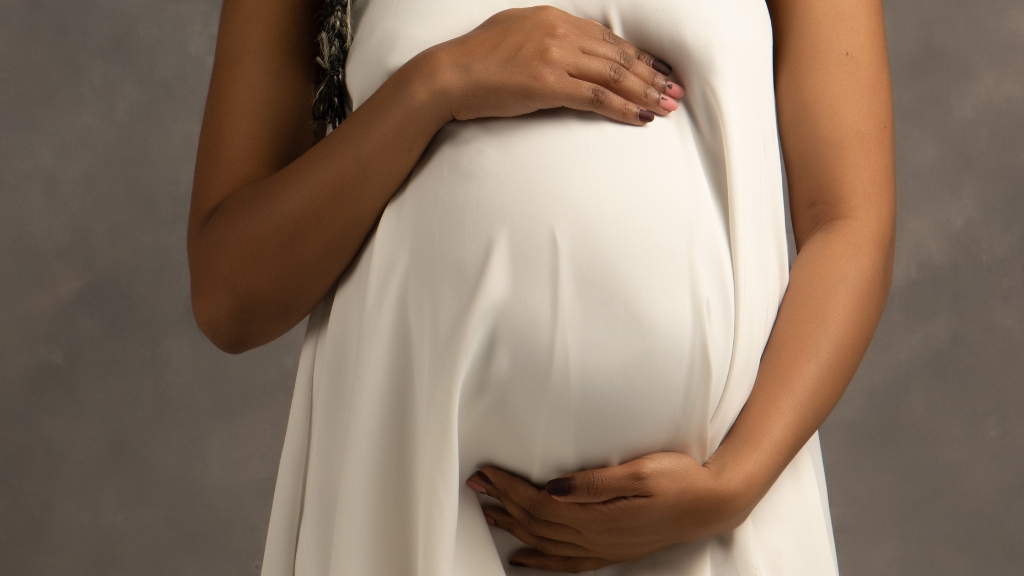About 3.6 million babies were born in the United States in 2024. That works out to a little over 10,000 births a day.
At first, that sounds like a lot. Yet the bigger story stays the same: births have been trending down for years as people change how, and when, they start families.
Many couples wait longer to have kids. Many families stop at one child, or choose not to have children at all. Annual totals keep pointing to demographic decline.
Other data helps explain the shift. Reports on family size patterns and daily death counts show natural growth slowing, while overall population change relies more on migration.
Next comes a closer look at how many people are born each year, and what the trend could mean for the future of the United States.
Methodology
Data for this report comes from established national and international sources. Each source publishes official records, research studies, and statistical estimates that support consistent reporting.
Main sources include:
- Centers for Disease Control and Prevention (CDC)
- National Center for Health Statistics (NCHS)
- BabyCenter
Reports from 2023 and 2024 were used to compare total births, fertility rates, and longer-term trends in the United States. Global figures were added to show how the United States fits into broader demographic change worldwide.
Highlights
- Around 3.62 million babies were born in the United States in 2024, a small increase from about 3.59 million in 2023. Birth levels still sit below peaks seen before the Great Recession.
- The total fertility rate in 2023 was 1.616 births per woman, well under the 2.1 level tied to long-term population replacement.
- Teen births fell to a record low of 13.2 per 1,000 in 2023, a drop linked to years of education and wider access to effective birth control.
- Hispanic women had the highest birth rate at 65.0 per 1,000 women, shaping future shifts in age groups and the labor force.
- C-section deliveries rose to 32.4% in 2023. Preterm birth rates stayed close to 10.41%, while gaps by race continued.
- Falling birth rates affect Social Security, jobs, and health care planning, making policy choices more urgent over the next decade.
Number of Babies Born in the US Over Time (From 1990s to 2025)
In 1995, the United States recorded close to 3.9 million births. The total climbed through the next decade and peaked in 2007 at more than 4.3 million births, a stretch often linked to a strong economy and demographic growth.
The 2008 recession changed the direction. Annual births started to slide, and by 2010, the number fell below 4 million. The decline continued through most of the 2010s.
NCBI notes the COVID-19 pandemic added another hit. Births fell to about 3.61 million in 2020, matching the uncertainty of that period. A small bounce followed in 2021 and 2022, with totals around 3.66 million, yet the broader trend stayed downward.
By 2023, births dropped to about 3.59 million. The 2024 total edged up to about 3.62 million.
When it comes to the year 2025, we are still waiting for complete data, which we will get in a few months. But there are already some clear insights about how many people are born in the US this year.
Detailed Birth Data

2007 stands as the recent high point for U.S. births, with about 4.31 million babies born. A strong economy and a larger share of younger adults helped lift the total.
Then the 2008 financial crash hit. Job insecurity, shaky income, and higher housing costs pushed many people to delay having kids or to stop earlier than planned.
By 2010, the annual total fell under 4 million and kept sliding through much of the 2010s. When COVID-19 arrived, births dropped to about 3.61 million in 2020, shaped by uncertainty, strain on health care, and major disruptions to daily life.
A short rebound followed. Births rose to about 3.67 million in 2022, often tied to delayed pandemic plans and a steadier economy. The bounce faded in 2023, when the total fell back to 3.59 million, staying in line with the longer decline in fertility.
A newer snapshot points the same way. The Consumer Shield report puts 2025 births at 2.40 million through August 2025. Macrotrends lists a 2025 birth rate of 11.99, a 0.12 percent dip from 2024.
Birth Rates by Maternal Age
| Maternal Age Group | Number of Births | Birth Rate (per 1,000 women) | Notes |
| 15–19 (Teens) | 140,801 | 13.2 | Record low, continuing decline |
| 20–24 | 616,139 | 55.4 | 47% decline since 2007 |
| 25–29 | 985,309 | 91.0 | Down 3% from 2022 |
| 30–34 | 1,096,696 | 95.1 | Down 2% from 2022 |
| 35–39 | 603,798 | 54.7 | Down 1% from 2022 |
| 40–44 | 136,096 | 12.6 | Stable from 2022 |
| 45+ | 10,726 | 1.1 | Rare but stable |
Teen birth rates (15–19) dropped to 13.2 per 1,000 women, marking a record low and continuing a 79% decline since 1991. Among all of the statistics that show how the number of people born in the US is dropping, this one is actually positive.
The decline results from increased contraception access, sex education, and cultural norms that prioritize education and career establishment before parenthood.
Births among women ages 20 to 24 kept dropping in 2023. That group had 616,139 births, or 55.4 births per 1,000 women. The rate sits 47 percent lower than in 2007. More people in their early 20s are waiting, and money plays a big role, especially student debt, high rent or home prices, and the cost of child care.
Women ages 25 to 29 had 985,309 births in 2023, a rate of 91.0 per 1,000, down 3 percent from 2022. Women ages 30 to 34 had 1,096,696 births, with a rate of 95.1, down 2 percent. Even with that dip, the early 30s remain the most common time to have a baby in the United States. Many people want work, income, and housing lined up first.
Older groups changed less. Women ages 35 to 39 had 603,798 births, a rate of 54.7. Women ages 40 to 44 had 136,096 births, a rate of 12.6. Steady numbers later on match the long shift toward having kids at older ages, helped by fertility treatment being more available and attitudes changing.
Health care systems will have to keep up. More pregnancies later in life usually mean more high risk care, plus more demand for prenatal visits and specialist support. Work that helped drive teen birth rates down also still needs funding and attention. Staffing, prenatal care, and family services matter more as the average age of new parents keeps rising.
Birth Rates by Race and Ethnicity

In 2023, Hispanic women had the highest birth rate in the United States: 65.0 births per 1,000 women.
That added up to nearly 944,000 births. Such a large share affects future population changes, future workers, and what schools will need.
Black women who are not Hispanic had 490,677 births, with a rate of 53.5 per 1,000. White women who are not Hispanic had 1,783,962 births, with a rate of 51.6. Asian women who are not Hispanic had the lowest rate, 47.7 per 1,000, with 215,599 births.
The differences show why health care and family support programs need to fit the people they serve, from prenatal care to help after the baby is born.
Higher birth rates also mean a younger average age in those communities, which can shape work and spending patterns in the years ahead.
Cesarean and Preterm Birth Rates
View this post on Instagram
Cesarean and Preterm Birth Rates, U.S., 2023
C-section births made up 32.4% of deliveries in 2023, up from 32.1% in 2022. The low-risk C-section rate also inched up to 26.6%, according to Axios.
The shift points to more births happening by surgery. A few factors can drive that, including older moms, more pregnancy complications, and hospital routines that make C-sections more common.
The preterm birth rate held steady at 10.41%. Even without a jump, it remains a major public health concern because early births often mean more medical care and more health risks for babies.
Gaps by race and ethnicity also continue. Black women still have higher preterm birth rates, which keeps attention on better prenatal care and stronger support before and after birth.
Day of the Week When Most Babies Are Born

- Tuesday is the most common day for births in the United States, with Thursday close behind.
- Sunday is the least common day, followed by Saturday.
Scheduled C sections and inductions usually happen on weekdays, which drives a big part of this pattern. Hospital staffing and routines can also shape when deliveries happen, even for births that start on their own.
In 2021:
- 762,012 babies were born on weekends.
- 2,902,280 were born on weekdays.
Time of Day
- The most common time for births is noon to 3 PM, followed by 9 AM to noon.
- The least common time is 3 AM to 6 AM, followed by midnight to 3 AM.
What Is the Most Popular Birth Month?
Interestingly the most common birth month in the US is august which means a lot of winter conceptions,
But i wonder if they most common birth month changes based on the climate you live in
— BROTHER LOBO 🐺⚔️ (@ellobosalvaje) March 17, 2024
In 2021, August was the most popular month for births in the U.S., followed by July, September, and October. These trends align with conception patterns around the winter holidays and early winter months.
The least common month for births is February, which naturally has fewer days, followed by January and March, according to BabyCenter.
U.S. Birth Rate vs. Global Birth Rate
The United States recorded a birth rate of 11.0 births per 1,000 people in 2021, edging up from 10.9 in 2020. The change was modest, but notable as the first year-to-year increase since 2014.
Even so, the broader direction remains downward. In 2010, the national birth rate stood at 13.0 per 1,000, and the slide since then points to later family formation, smaller desired family size, and rising costs tied to housing and child-raising.
Global patterns look different in scale but similar in direction. The worldwide average sits near 18 births per 1,000 people, yet regional gaps remain wide:
- ~40 per 1,000 in parts of Sub-Saharan Africa.
- <10 per 1,000 in many European countries.
High-birth-rate regions tend to be younger, with larger shares of the population in childbearing ages and fewer barriers to early parenthood.
Low-birth-rate regions often show the opposite mix: older populations, later partnerships, and stronger economic or cultural pressures toward smaller families.
Migration can soften population decline in some places, but it does not reverse the underlying fertility shift.
The World Counts notes global birth rates have been falling by about 1% a year for decades. Longer time in school, easier access to birth control, more people living in cities, and more job options for women all play a role.
Seen in that light, the United States follows the same general pattern. Fewer babies are being born overall, and the biggest drivers tend to be practical: how old the population is, how steady money feels, and how expensive it is to raise a child.
Which US State Gets the Most Babies Born Per Year

Some states record far higher birth totals each year due to population size, age structure, and regional trends.
Numbers below show where the largest counts come from and where totals remain lowest.
States with the Most Births (2024)
Big states continue to account for the largest share of U.S. births, mainly because of sheer population scale and continued growth in the South and West.
Provisional CDC counts for 2024 show familiar leaders at the top, with California and Texas nearly tied, and Florida holding a clear third place.
- California: 401,515 births in 2024
- Texas: 390,506 births in 2024
- Florida: 224,267 births in 2024
- New York: 204,864 births in 2024
- Pennsylvania: 127,079 births in 2024
States With the Fewest Births (2024)
Smaller states and jurisdictions post the lowest totals, shaped by a limited population base and older age profiles. Vermont stays at the bottom, and Wyoming and the District of Columbia remain close behind.
- Vermont: 5,026 births in 2024
- Wyoming: 6,085 births in 2024
- District of Columbia: 7,601 births in 2024
Highest Birth Rates
Birth rates per 1,000 residents stay highest in younger, faster-growing states, where family formation happens earlier on average, and the share of adults in childbearing ages is larger. The available 2024 data place Utah at the top again, followed by Texas and South Dakota.
- Utah: rate of 13.16
- Texas: rate of 12.52
- South Dakota: rate of 12.28
Lowest Birth Rates
New England continues to sit at the low end, driven by older populations, later partnerships, and smaller average family size.
- Vermont: rate of 7.77
- Maine: rate of 8.28
- New Hampshire: rate of 8.38
Fertility Rates Across the U.S.

The total fertility rate in the United States was about 1.6 births per woman in 2021. That was a small uptick from 2020, yet still far below the 2.1 level tied to long term population replacement, based on Wharton data.
States with the Highest TFR
- South Dakota: 2.01
- Nebraska: 2.0
- North Dakota, Utah, Louisiana, Arkansas: about 1.9
States with the Lowest TFR
- Vermont, Rhode Island, Oregon, Massachusetts: 1.4
- New Hampshire, Maine: 1.5
The gap comes down to everyday differences from state to state. Some places have younger populations, higher marriage rates, and stronger social norms around larger families. Others have older age profiles, higher housing costs, and more people delaying children for school or career. Access to health care and family planning also matters, along with local wages and the cost of child care.
Maternal Age Trends

The average age of first-time mothers in the United States rose to 27.3 in 2021, up from 27.1 in 2020. In 1970, the average was 21.4.
The jump shows how much family timing has changed, with more people waiting until later to have their first child.
- The overall average maternal age for all births was 29.4 years in 2021.
- Teen birth rates have dropped 78% since 1991.
- Birth rates for women aged 20–24 hit record lows in 2021.
- Women aged 30–39 saw increases in birth rates in 2021, reflecting later family building.
- Women 40–44 had a birth rate of 12 per 1,000, with births in this age group rising by 5% from 2020 to 2021.
Notably, 1,041 births in 2021 were to women aged 50 or older, a sharp increase from only 144 in 1997.
Conclusion
@statista_official How common is your Birthday? In the US, 9 of the top 10 most popular birth-dates fall between September 9 and 20. No surprise then that the ninth month of the year is also the most common month to be born in. The least likely dates to be born on? December 25th, January 1st and December 24 The large number of public holidays at this time mean only natural and emergency births are likely to take place. #birthday #statista #foryou #fyp #viral #trending #trendingvideo #tik_tok ♬ Passion – Milky Chance
The United States still welcomes roughly 3.6 million newborns a year, yet the country no longer grows the way it did in past decades. Birth rates have stayed under replacement since 2007, which slows natural population growth and puts the United States closer to the pattern seen in many other high-income countries.
Numbers like these shape long-range decisions. Fewer births can mean a smaller pool of future workers, plus more strain on health care and retirement systems as the population ages.
Planning for schools, housing, and public services depends on where the birth trend goes next.


